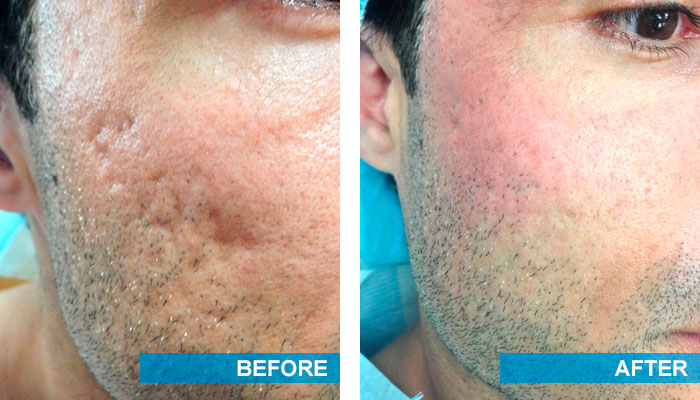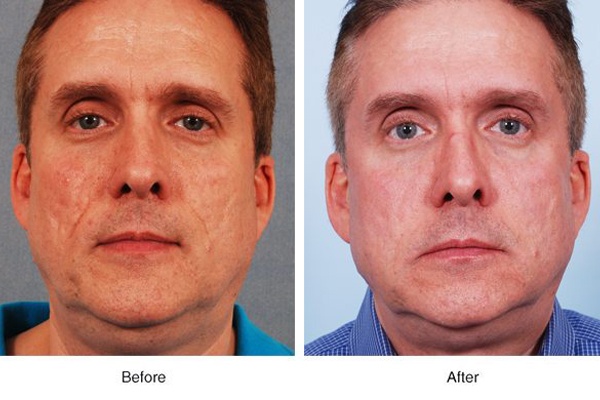Finest Acne and Acne Scars Treatment: Restore Your Skin's All-natural Charm
Checking Out Skin Conditions: Treating and identifying Acne Scars for Healthier Skin
Acne marks stand for a substantial issue for individuals looking for to preserve healthy skin, as they can influence both look and self-confidence. Understanding the numerous sorts of scars, from atrophic to hypertrophic, is essential for determining ideal treatment options. While specialist interventions like chemical peels and microneedling can be reliable, the value of personalized treatment plans can not be overemphasized. Preventative procedures play an important function in reducing future scarring. As we explore these elements, one need to think about just how the ideal method can bring about transformative outcomes.
Comprehending Acne Marks
Comprehending acne scars is vital for any person who has experienced extreme acne, as these marks can have a long-term effect on both physical look and emotional well-being. When the skin undergoes inflammatory feedbacks throughout active acne lesions, acne scars develop. The extent of scarring is typically affected by aspects such as the kind of acne, its period, and individual skin qualities.
The body's natural healing process can lead to either atrophic marks, which show up as anxieties in the skin, or hypertrophic marks, which are elevated and arise from overflow of collagen. In addition, the emotional toll of acne marks need to not be taken too lightly; many people report sensations of shame, anxiousness, and decreased self-worth. This psychological worry can influence social communications and general lifestyle.
Attending to acne scars calls for a thorough understanding of their development and influence. Understanding of the capacity for long-lasting consequences connected with untreated marks can inspire individuals to seek appropriate therapies. Early treatment and efficient management strategies can significantly boost skin look and improve psychological strength, highlighting the significance of understanding the intricacies surrounding acne scars.
Kinds of Acne Marks
Acne scars can be classified right into distinct kinds, each displaying distinct characteristics and calling for particular therapy techniques. The main types of acne marks include atrophic, hypertrophic, and keloid marks.

Hypertrophic scars, in comparison, are elevated above the skin level and are the result of extreme collagen manufacturing during the healing process. They commonly remain within the boundaries of the initial acne lesion. Keloid marks are similar however prolong past the original injury site, creating bigger, elevated areas that can be itchy or agonizing.
Understanding these kinds of scars is essential for choosing appropriate therapy alternatives. Various marks might react far better to specific therapies, such as laser treatments, fillers, or surgical interventions, emphasizing the importance of a customized approach to acne mark monitoring.
Recognizing Your Marks
When reviewing the look of your skin, it is vital to properly determine the type of scars present, as this will certainly educate one of the most efficient treatment strategy. Acne marks usually come under two groups: hypertrophic and atrophic marks. Atrophic scars, which are the most usual, show up as anxieties or indentations on the skin. These can further be identified into ice-pick scars, boxcar scars, and rolling marks, each showing unique characteristics and calling for various methods for assessment.
Hypertrophic scars, on website here the various other hand, are increased and occur because of excessive collagen manufacturing during the healing procedure. Acknowledging the specific functions of your scars-- such helpful hints as texture, size, and deepness-- is vital for correct identification. In addition, consider the circulation of marks across your skin, as this can show the severity and period of the acne problem.
Engaging with a skin doctor can offer useful insights into the nature of your scars, assisting in the differentiation in between different kinds. An extensive understanding of your marks will ultimately cause an extra tailored and effective therapy strategy, making certain a more clear and much healthier skin tone.
Treatment Alternatives Readily Available
Identifying the particular kind of acne marks present on your skin prepares for discovering reliable therapy alternatives. Typical sorts of acne scars consist of atrophic (depressed), hypertrophic (increased), and post-inflammatory erythema.
For atrophic marks, options such as chemical peels, microneedling, and laser resurfacing are extensively made use of. Chemical peels off make use of acids to get rid of the outer layer of skin, advertising new cell development. Microneedling entails tiny needles that create micro-injuries, stimulating collagen production. Laser resurfacing targets damaged skin cells, improving texture and tone.
Hypertrophic marks can be treated with corticosteroid shots to flatten the scar or laser therapy to reduce soreness and boost look. acne treatment for sensitive skin. Silicone gel sheets and pressure read this post here dressings may also aid in handling increased scars
On top of that, facial fillers can briefly fill out anxieties from atrophic scars, while medical excision might be suitable for severe instances. Each therapy choice has its factors to consider and benefits, making it essential to speak with a skin doctor. They can supply customized recommendations based upon the kind and seriousness of your marks, along with your skin type and overall health.
Tips for Avoidance
Effective avoidance methods can significantly minimize the likelihood of creating acne scars. Utilizing non-comedogenic items aids avoid clogged up pores, which can exacerbate acne.
Preventing the urge to pop or select acne sores is important, as this can bring about much deeper skin damage and increase the risk of scarring. Instead, take into consideration using a chilly compress or over-the-counter treatments to decrease swelling and inflammation.
Sunlight defense is another important element of avoidance; ultraviolet (UV) rays can dim marks and prevent the recovery procedure. Using a broad-spectrum sun block with at the very least SPF 30 daily can protect the skin and promote also recovery.
Finally, keeping a balanced diet regimen rich in minerals, antioxidants, and vitamins sustains skin health and wellness and recovery. Staying hydrated and taking care of tension degrees can additionally play a considerable duty in decreasing acne flare-ups. By applying these strategies, individuals can dramatically reduce their possibilities of creating acne scars.

Verdict
To conclude, understanding and determining acne scars is crucial for effective treatment and achieving healthier skin. Different kinds of acne marks, consisting of hypertrophic and atrophic marks, require certain treatments customized to specific demands. Therapy alternatives array from chemical peels and microneedling to corticosteroid injections, stressing the importance of speaking with a skin doctor. Furthermore, embracing a gentle skincare routine and shielding the skin from UV direct exposure can considerably add to the avoidance of more scarring and general skin health and wellness.
The body's natural healing procedure can result in either atrophic marks, which appear as depressions in the skin, or hypertrophic marks, which are increased and result from overproduction of collagen. They are more separated into 3 subtypes: ice choice scars, boxcar marks, and rolling scars. Acne marks typically fall right into two groups: atrophic and hypertrophic marks. These can additionally be classified right into ice-pick scars, boxcar marks, and rolling scars, each showing distinct features and needing various techniques for assessment.
Different types of acne scars, consisting of atrophic and hypertrophic marks, necessitate details interventions customized to individual requirements.